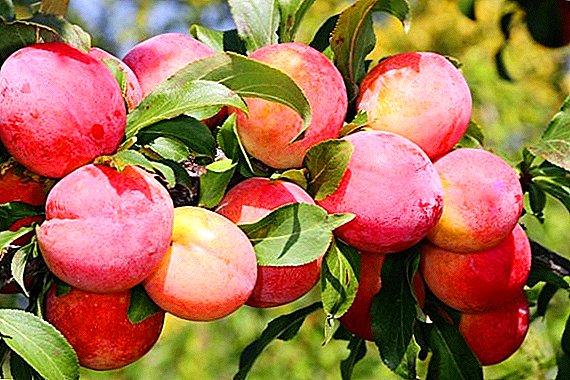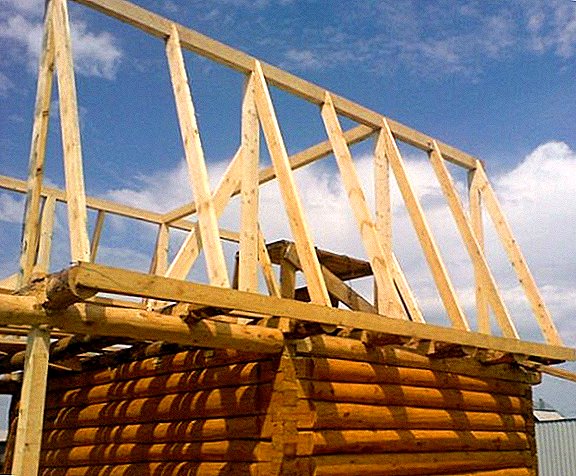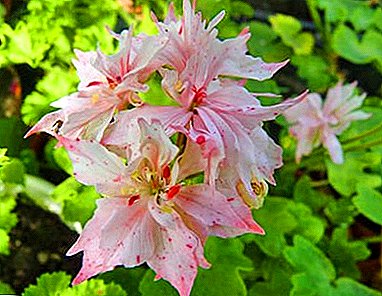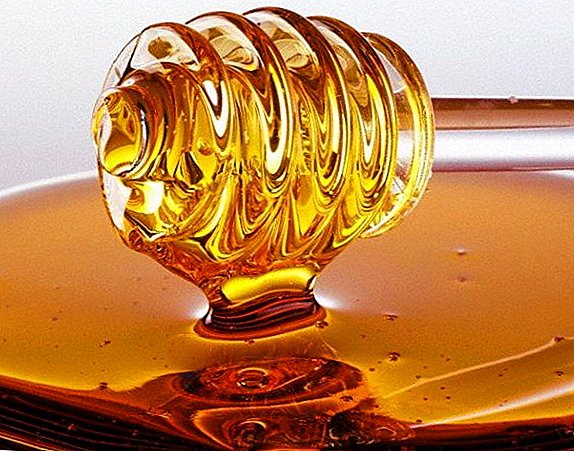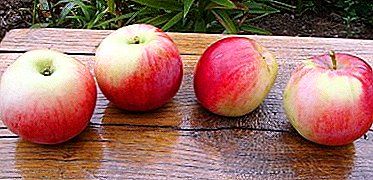 Wood is one of the most commonly used materials in construction and furniture manufacturing. And in order to be served as long as possible, he needs the right care. There are quite a number of factors that have a bad effect on wood and render it unusable, degrading the external qualities of the material or destroying its internal structure. Therefore, it is important to know what and from what to process the tree so that it is used as long as possible.
Wood is one of the most commonly used materials in construction and furniture manufacturing. And in order to be served as long as possible, he needs the right care. There are quite a number of factors that have a bad effect on wood and render it unusable, degrading the external qualities of the material or destroying its internal structure. Therefore, it is important to know what and from what to process the tree so that it is used as long as possible.
Which causes decay
Without treatment with special substances, almost all species of trees rot, because such material contains a certain level of moisture, which, in turn, provides all the conditions for the emergence and reproduction of fungi.
Therefore, exploiting the tree of even the most expensive species, one cannot be sure that over time, with its integrity, everything will be as good as with the purchase.
The reason for the decay of the tree is that such material itself is a breeding ground for a huge number of species of fungi. Especially great is the risk of their occurrence, if the tree is still in constant contact with water or moisture. 
Wood is used in the construction of tapestries, pergolas, gazebos, fences, greenhouses, cellars, sheepdogs, chicken coops, verandahs, bathhouses, roofs, garden paths, foundations, formwork, pavilions.
How not to let the wood rot
To prevent the wood from rotting:
- protect it from long-term wettingSince it is especially important for such a material not only not to get wet, but also to dry completely after it gets wet. If the tree is constantly in the water, it will be difficult to avoid exposure to fungi;
- it is better to use wood drying chamber. Drying of this material is a mandatory operation of its refining. Among all types of wood drying, it is chamber drying that is the most effective in terms of protection from decay, that is, moisture removal from wood using heat-treating equipment (drying chambers equipped with ventilation, dampening and heating systems).
 You need to understand how rotting threatens your wooden house, bridge, furniture, etc. There are three main types of rot that affect such material:
You need to understand how rotting threatens your wooden house, bridge, furniture, etc. There are three main types of rot that affect such material:- brown: can cause splitting and crumbling of wood. If you do not stop the process of decay in time, the material will begin to crumble and lose the ability to hold any weight;
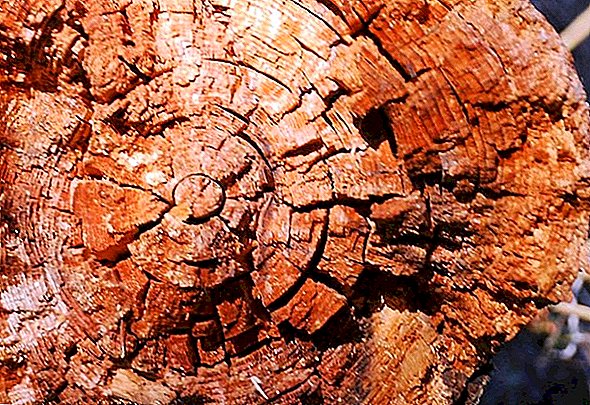 When rubbed between the fingers, the wood affected by brown rot turns into dust
When rubbed between the fingers, the wood affected by brown rot turns into dust - soft: appears at an increased level of humidity in the room where a wooden product is located, it is less common than other species;
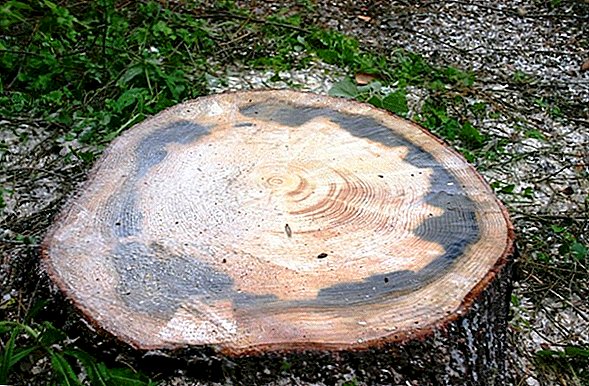
- white: makes wood soft, light, loose, fibrous.
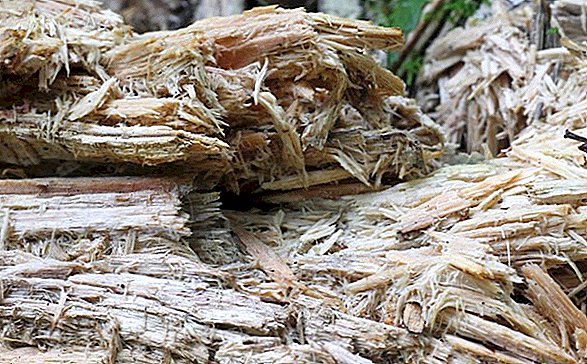 When rubbing between the fingers, white-stained wood leaves fibers
When rubbing between the fingers, white-stained wood leaves fibers
Wood classification by resistance to rotting and impregnability
In order not to mess around for a long time with the protection of a wooden house, boat or interior items from rot, it is important to choose the right material because they exploit different types of trees, differing in the level of resistance to rot and even impregnation with the means that protect against it.
For resistance to rotting wood species
According to this criterion, tree species are assigned to one of 4 main classes:
- The most resistant to the effects of rot: pine, ash, oak.
- Possessing average resistance: beech, such representatives of the Sosnovykh genus, like spruce, cedar, larch, fir.
- Low-resistant: birch, elm, hornbeam, maple.
- Breeds that do not have resistance to rotting: linden, alder, aspen.

For the impregnation of protective means of wood species
As for the ability of wood to absorb substances, with whose help it is possible to protect the material from rotting, this classification consists of the following 3 classes:
- Materials that soak easily: pine, birch, beech.
- Raw materials with moderate saturation: cedar, European larch, hornbeam, oak, maple, linden, aspen, alder.
- Hard-to-penetrate: spruce, Siberian larch, fir, ash, elm.
Wood classification
Substances used for the purpose of giving the material resistance to fungi can be classified according to the nature of the action, solubility and leachability.
Did you know? If earlier only small houses and churches were worth of wood, now in the USA and Europe, construction companies massively offer projects of 30-storey office centers and apartment buildings built entirely of wood. This trend is associated with the desire to clean the atmosphere, make environmentally friendly large buildings and improve the quality of living in large cities.

Wood protective equipment according to the nature of the action
- Antiseptic substances: ammonium fluorosilicate, pasta PAF-KSDB.
- Substances that slow down inflammation and burning (flame retardants): OFP-9 coating.
- Combined effects (protect against rotting and fire): PBS preparation.
To facilitate manual labor, a lot of tools have been invented, if you wish, you can make a potato-digger, potato planter, hiller, Fokin’s flat-cutter, snow blower, a shovel with a screw, a miracle shovel, a snow shovel, a mower with your own hands.
Wood preservatives for solubility
- Those that dissolve in water: BS-13 preparation.
- Substances soluble in light solventsthat are of organic nature (alcohols, hydrocarbons, ketones, halogen derivatives of hydrocarbons, etc.): the preparation CATGSH, preparations of copper naphthenate.
- Soluble in oils and heavy oil products (different types of fuel, lubricants, raw materials, insulating medium): shale oil.
Wood protective equipment according to the degree and conditions of leaching
- Substances that are easily washed out: BS-13 preparation.
- Washed away: Paste PAF-KL, Paste PAF-KSDB.
- Difficult to wash: sodium pentachlorophenolate, PBS preparation.
- Non-washable: anthracene oil.

Recommendations, depending on the operating conditions
In order to correctly determine the best way to protect a tree, you need to know why and under what conditions products made from this material will be used.
Products are located indoors and are not exposed to weather conditions and moisture.
To protect wooden objects that are not threatened with moisture, you can use folk fungal prevention methods:
- a mixture of propolis and sunflower oil in a ratio of 1: 3. Apply with a soft sponge on dry wood, cleaned from dust;
Important! After applying a mixture of propolis and oil to the wood, it will become easily flammable, so before using this tool, make sure that this option suits you.
- copper sulfate solution. It should be thoroughly mixed, wet them with a rag or sponge and soak it with clean, dry wood. After impregnation, the wooden product must be dried well in fresh air, so that it is covered from sunlight. To dry the treated wood will be from a week to a month.
Learn about the properties of propolis for the human body, how to use copper sulfate in horticulture, what is fraught with copper sulfate poisoning.
Products are indoors and not exposed to the weather (especially rain), but moisture can occur.
To protect such products it is better to use water-soluble light antiseptics, since there is no constant contact with moisture and, thus, there is no need to use drugs that are very resistant to water, which, moreover, are toxic and can badly affect the health of people who are constantly near wood products impregnated or coated with such protective agents.
Products out of contact with the ground, used outside the premises, exposed to periodic atmospheric precipitation.
In this case, it is better to use means of combined action, which are intended for use outside and prepared on a non-aqueous basis. They are not very expensive and, at the same time, perfectly protect the tree from rot caused by the effects of natural precipitation. 
Did you know? The history of the construction of wooden houses has been almost 2 millennia. The oldest building of wood today is the Buddhist temple Horyu-ji: it is about 1500 years old. The temple is located in Japan.
Products are constantly in contact with soil or fresh water, i.e. constantly wetting
The situation is a little different with hedges, poles and other products that are constantly in contact with the ground, that is, they are often wetted and do not have time to dry out. In such cases, it is better to use products that contain heavy resins: they create a very strong protective film and penetrate deep into the wood surface.
Constant contact with salt water
Sea water has a more negative impact on wood than ordinary river water, so to ensure the integrity of the material during its stay in salt water or the impact of the latter on it, it is better to use non-washable products that dissolve in oils or heavy petroleum products. 
Mold Remedies
The tree can also be affected by destructive factors of biological origin, among which is mold. It may appear due to increased humidity and heat in the room, poor ventilation, summer rains. It is very difficult to get rid of such "ailments", therefore it is better to prevent their occurrence.
Important! Mold is very dangerous for the human body. It can both cause mild allergic reactions and cause asthma, pneumonia, diseases of the upper respiratory tract, dry cough, gastric upset, rashes on the skin, headaches, nosebleeds.So that the wood does not mold over time, you can soak it with an aqueous solution of copper sulfate, sodium fluoride, specially prepared borax or chemical fungicides. You can also buy ready-made solution, for example, "Senezh" or "KSD".
Video: how to process wood from mold
Funds from fire
The greatest attention should be paid to providing flame resistance to wood products, since one of the features of this material is the rapid ignition. In order to protect the house or any other wooden structures or objects from fire, it is best to use flame retardants - impregnations based on aqueous solutions of salts and surfactants. Processing by such means can be carried out at all stages of operation.
Thus, even before using the wood, it is necessary to treat it with antiseptics — substances that prevent rotting of the material, then fire retardants so that the wood is not sensitive to fire. And last but not least, if necessary, it is necessary to process a wooden product with impregnations that repel water and prevent its structure from penetrating without at the same time interfering with the removal of excess moisture during drying.
Video: how to make a wood fire impregnation at home
- conditions, according to GOST "atmospheric drying of conifers", from which it follows that the location of the wood should not be less than 50 cm from the ground. The exception is coniferous wood with high density of intercellular substance (larch) ...
- Creating ventilation conditions for wood preservation
- treatment with protective materials ...
==========================

As for the engine oil - you, apparently, had in mind the development. Omitting the beauty of the Russian language, the main drawback is the smell, even after a long time, so it is not suitable for residential buildings. Well, of course, there will be no fountain ...
But if we talk, for example, about the wooden frame of the fence, the raw subfield of the shed, and so on, from the point of view of durability, it is better to find no material for processing wood against rotting and other atmospheric influences. (The bearing skeleton of the fence has been processed by working out, 9 years have passed, and no trace of destruction. And the smell is very faint.) Is that creosote, only the smell is much stronger, and it is better not to use it next to the dwelling.




 When rubbed between the fingers, the wood affected by brown rot turns into dust
When rubbed between the fingers, the wood affected by brown rot turns into dust
 When rubbing between the fingers, white-stained wood leaves fibers
When rubbing between the fingers, white-stained wood leaves fibers